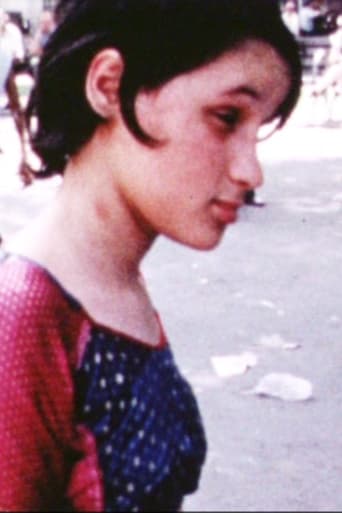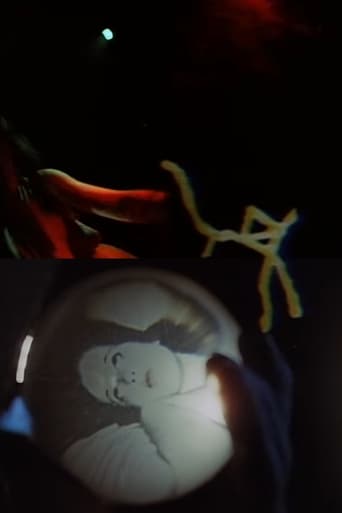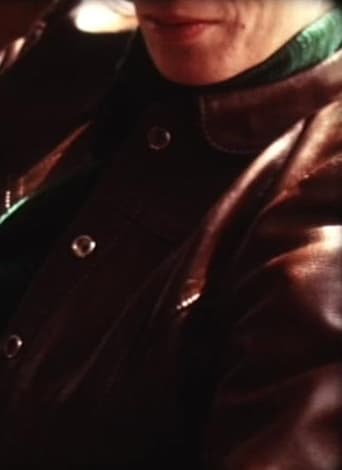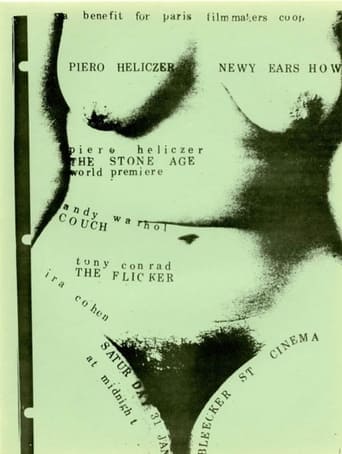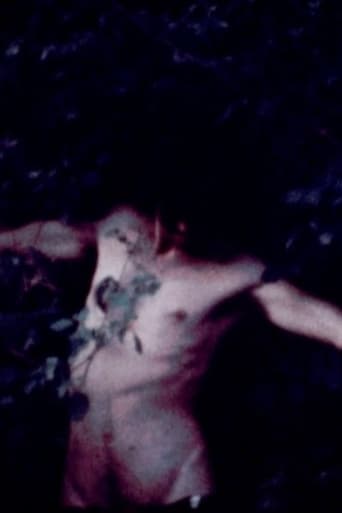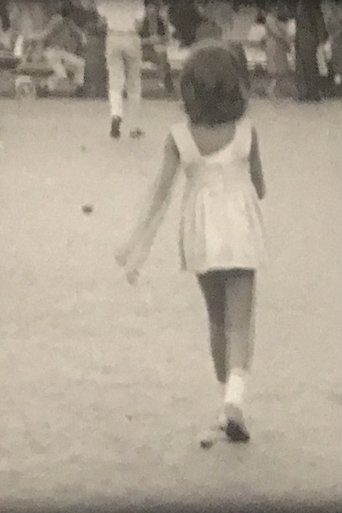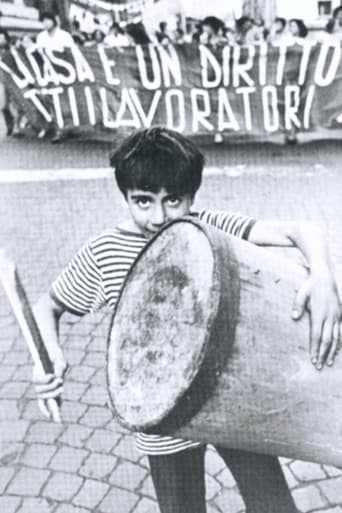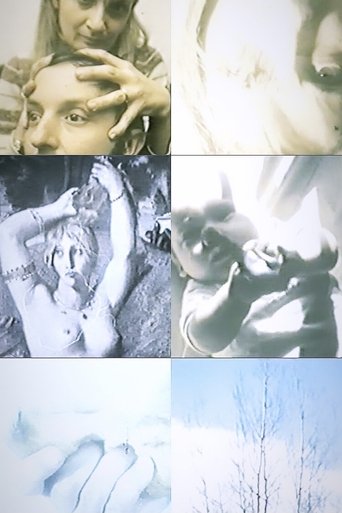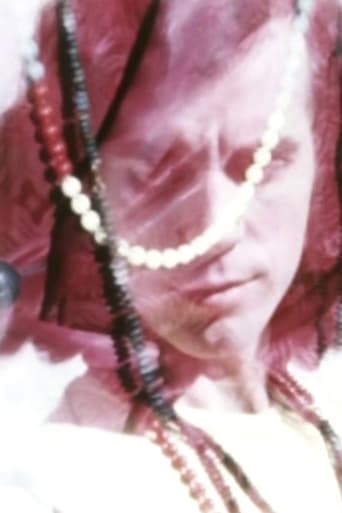Alfredo Leonardi
Recently added
Orgonauti, evviva!
Jan 01, 1970In the distant future, a spaceship inhabited by a group of young descendants of a "subversive" minority who escaped the destruction of the Earth, recovers a capsule in which the hibernating body of a reactionary warmonger has been preserved, who after having caused war and death, it has abandoned the now unlivable Earth. The visual experimentation aimed at the liberation of the gaze is intertwined with psychedelic visions on the one hand and with the orgone theory of Reichian memory on the other.
Science Fiction
Political Portraits
Jan 01, 1969Dedicated to Dieter Meier. voice-over by Gregory Markopoulos, reading an excerpt in English translation of Paul Valéry’s L’Homme et la nuit (Man and the Night).
The Stone Age
Jan 31, 1970"The question is, it is either going to be a stoned age or a new Stone Age" - Louis Brigante
RARA
May 30, 1969In all of his work, Bussotti makes frequent reference to the body, to sexuality. This to remind musicians — especially classically trained ones — that they are not body-less angels, that they are not just their musical thoughts, that they are still, in the last analysis, flesh and bones. Thus the erotic is not for shocking, but to stress that making music involves the body in a very direct way.
Après la Passion selon Sade
Jan 01, 1968Après la Passion selon Sade
Jan 01, 1968Après la Passion selon Sade
Jan 01, 1968Amore, amore
Jan 01, 1966The title Amore amore ( Love Love) defines the primary emotive motor of the film and constitutes the filter through which are selected the materials used - people, things, signs - and determines a good portion of the associations though which the sequences unwind.
Documentary
Escercizo di Meditazione
Jul 09, 1968A piece of reality, a roman square, observed in a way to achieve a more intense self-perception. –A. L.
Organum Multiplum
Jan 01, 1967Work and life of Musica Elettronica Viva, group of live electronic music, mainly composed by American musicians, active in Rome, Italy. –A. L.
Le N Ragazze Piu Belle di Piazza Navona
Jan 01, 1968The faces of beauty are infinite, if you only want to look at them, and the ones of infancy are the most divine. –A. L.
Il fitto dei padroni non lo paghiamo più
Jan 01, 1972Occhio privato sul nuovo mondo
Jan 01, 1970Se l'inconscio si ribella
Nov 15, 1967In this film, as in all my previous ones, there is a direct connection between inner urges and cinematic rendering. I tried to visualize my present aspiration to recover, through the various ways taught by one’s experience, the easiness, directness and ripeness proper to children’s relationships and affective life. This film is maybe a track of this path backwards. – A. L.
Drama
Living & Glorious
Jan 01, 1965Leonardi's film about the Living Theatre is less concerned with a straight documentary presentation of the exile theatre group from New York, but rather is concerned with the specific atmospheric factor which is indicated by their name, and which constitutes the highly suggestive effect of their playing. Cutting, for Leonardi, is the most decisive aesthetic device. The result is a wonderfully composed furioso of pictures. The hand-held camera catches rehearsals, conversations without sound, bits of theatre and daily life actions (which, for Living Theatre people, is very often intermixed).
Documentary
Living & Glorious
Jan 01, 1965Leonardi's film about the Living Theatre is less concerned with a straight documentary presentation of the exile theatre group from New York, but rather is concerned with the specific atmospheric factor which is indicated by their name, and which constitutes the highly suggestive effect of their playing. Cutting, for Leonardi, is the most decisive aesthetic device. The result is a wonderfully composed furioso of pictures. The hand-held camera catches rehearsals, conversations without sound, bits of theatre and daily life actions (which, for Living Theatre people, is very often intermixed).
Documentary
Vampiro romano
Jan 01, 1970Tutto, tutto nello stesso istante
Mar 21, 1969Amore, amore
Jan 01, 1966The title Amore amore ( Love Love) defines the primary emotive motor of the film and constitutes the filter through which are selected the materials used - people, things, signs - and determines a good portion of the associations though which the sequences unwind.
Documentary
Amore, amore
Jan 01, 1966The title Amore amore ( Love Love) defines the primary emotive motor of the film and constitutes the filter through which are selected the materials used - people, things, signs - and determines a good portion of the associations though which the sequences unwind.
Documentary
Libro di Santi di Roma eterna
Dec 21, 1968A (temporary) leave of many friends who are my truest world, with the attempt of getting them together in an ideal summary conceived to support me during my being far away. –A. L.
Quartieri popolari di Roma
Feb 03, 1972Libro di Santi di Roma eterna
Dec 21, 1968A (temporary) leave of many friends who are my truest world, with the attempt of getting them together in an ideal summary conceived to support me during my being far away. –A. L.
Cinegiornale
Jan 01, 1967A compilation film of war newsreels and documentary material from historic, sociological and industrial films.
J. & J. & Co.
Jan 01, 1967Images of the life of the Living, the material that composes it was originally shot for the film: "The Unconscious Rebels". The shots were re-edited following the rehearsals of Mysteries and Antigone.
Documentary
Musica in corso
Jan 01, 1966Sotto le stelle, sotto il tendone
Jan 01, 1972Indulgenza Plenaria
Jan 01, 1964Leonardi's first documentary Indulgenza Plenaria explicitly exposed, and implicitly criticized, a prevailing culture of oppressive policing and censorship, a widespread state authoritarianism in Italian society in the sixties.
Pua la forza d'un sorriso
Jan 01, 1968During the 1968 Pesaro Festival, animated by the intervention of the students, riots occurred caused by fascist provocations and the usual police brutality. Following clashes culminating in the arrest of several Festival participants, there was a general assembly of those present in Pesaro, whose firm attitude led to the release of those arrested. The film is a chronicle of that meeting (It is the second of the cycle Seeing is a way of thinking).
Omsa sud, dopo un anno di lotta
Feb 04, 1974Lottando la vita - Lavoratori italiani a Berlino
Dec 07, 1975Porto Marghera, il lavoro contro la vita
Feb 04, 1979Policlinico in lotta
Feb 04, 1973L'isola dell'isola
Feb 04, 1977Carcere in Italia
Feb 04, 1973E nua ca simu a forza du mundu
Feb 04, 1971Motion Vision
Jan 01, 1967Motion Vision was originally screened in alternation with slides as part of the rotating installation Rotor Vision, in Rome in 1967 for the seminal group show at L’Attico entitled Fuoco, Immagine, Acqua, Terra with the participation of Mario Bignardi, Mario Ceroli, Piero Gilardi, Jannis Kounellis, Pino Pascali and Michelangelo Pistoletto. In Motion Vision Bignardi constructs a curious repertoire of animal profiles drawn in colour on paper, alternated with pop icons and a sequence of everyday gestures: from the tying of neckties the film passes to walking nude figures in slow motion, alluding to Muybridge and his chronophotography. —Tate Modern
Living & Glorious
Jan 01, 1965Leonardi's film about the Living Theatre is less concerned with a straight documentary presentation of the exile theatre group from New York, but rather is concerned with the specific atmospheric factor which is indicated by their name, and which constitutes the highly suggestive effect of their playing. Cutting, for Leonardi, is the most decisive aesthetic device. The result is a wonderfully composed furioso of pictures. The hand-held camera catches rehearsals, conversations without sound, bits of theatre and daily life actions (which, for Living Theatre people, is very often intermixed).
Documentary
La casa è un diritto non un privilegio
Dec 31, 1970The film documents the wave of house occupations in Rome at the end of the 60s: the working-class residents of the borgate, left-wing priest Don Lutte, the tenants’ committee, who were in the orbit of the Communist Party, and the Comitato di Agitazione Borgate […].
Documentary
Cine-Volantini
Dec 12, 1970On the occasion of the regional elections of 1970, the Italian Communist Party seizes a new model of propaganda and counter-information developed in France during May 68: the cine-tract.
